
The Hirshhorn Museum and Sculpture Garden is an art museum beside the National Mall in Washington, D.C., United States. The museum was initially endowed during the 1960s with the permanent art collection of Joseph H. Hirshhorn. It was designed by architect Gordon Bunshaft and is part of the Smithsonian Institution. It was conceived as the United States' museum of contemporary and modern art and currently focuses its collection-building and exhibition-planning mainly on the post–World War II period, with particular emphasis on art made during the last 50 years.

Joseph Herman Hirshhorn was an entrepreneur, financier, and art collector.

Barry Flanagan OBE RA was an Irish-Welsh sculptor. He is best known for his bronze statues of hares and other animals.
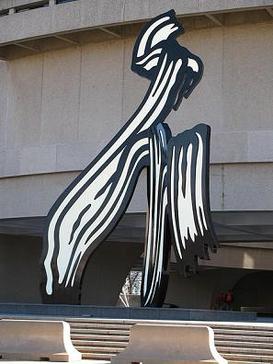
Brushstroke is a sculpture by Roy Lichtenstein. There are two copies. The original was created in 2001 for the Museo Nacional Centro de Arte Reina Sofía in Madrid, Spain. The second was delivered to the Hirshhorn Museum and Sculpture Garden in Washington, DC, on September 16, 2003, and dedicated on October 25, 2003.

Horse and Rider is a modern equestrian bronze sculpture by Marino Marini. Executed in 1952–1953, it is located at the Hirshhorn Museum and Sculpture Garden.

Sky Hooks is a painted sheet steel sculpture by Alexander Calder, constructed in 1962. It is located at the Hirshhorn Museum and Sculpture Garden.
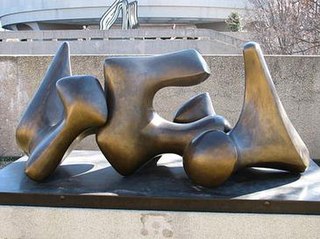
Three-Piece No. 3: Vertebrae is a bronze sculpture by Henry Moore. It was cast in 1968 as in edition of 8, along with an artist's copy which is now part of the Tate collection.
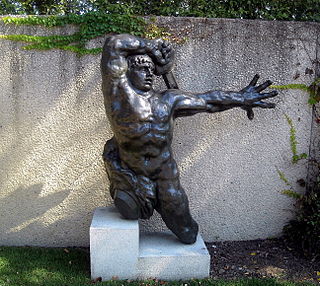
The Great Warrior of Montauban is a bronze sculpture by Antoine Bourdelle.

Crouching Woman is a bronze sculpture by Auguste Rodin.

The Back Series is a series of four bas-relief sculptures, by Henri Matisse. They are Matisse's largest and most monumental sculptures. The plaster originals are housed in the Musée Matisse in Le Cateau-Cambrésis, France.
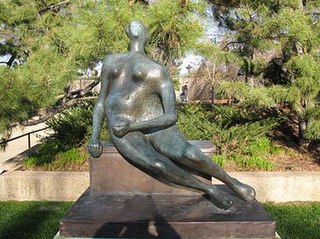
Seated Woman is a bronze sculpture by Henry Moore, catalogued as LH 435. Examples are in the Hirshhorn Museum and Sculpture Garden, Washington, D.C., and Nelson-Atkins Museum of Art in Kansas City.

Lunar Bird is an abstract bronze sculpture by Joan Miró. It was modeled in 1945, enlarged in 1966, and cast in 1967.

Pittsburgh Landscape is a 1954 painted steel abstract sculpture, by David Smith.

Draped Reclining Figure, 1952–53 is a bronze sculpture by Henry Moore, catalogued as "LH 336".

Hotel by a Railroad is a painting completed in 1952 by the American realist painter and printmaker Edward Hopper. It resides in the collection of the Hirshhorn Museum and Sculpture Garden. The work is an oil on canvas, measuring 101.981 x 79.375 cm.
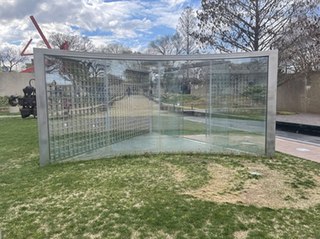
For Gordon Bunshaft is a 2006 sculpture by Dan Graham, installed at the Hirshhorn Museum and Sculpture Garden in Washington, D.C., United States. The work, which refers to American architect Gordon Bunshaft, was installed by the reflection pool of the Bunshaft-designed sculpture garden at the Hirshhorn on May 30, 2008.

Spatial Concept: Nature is a series of bronze sculptures by Lucio Fontana designed between 1959 and 1960. A series of these sculptures cast in 1965 is installed at the Hirshhorn Museum and Sculpture Garden in Washington, D.C., and a set cast in 1961 is owned by the Walker Art Center and installed in the Minneapolis Sculpture Garden.

Arcadia is a c.1883 painting by Thomas Eakins, Goodrich #196. It is part of the collection of the Metropolitan Museum of Art.
















